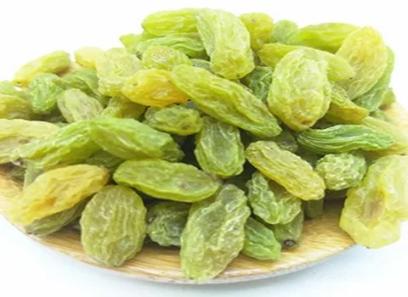here is some helpful information about hazelnuts that can be used for commercial goals. In general, hazelnut brand is nut seed that can be eaten and have been a part of the human diet since the Stone Age. It is thought to have come from Asia and then moved to Europe. This makes it one of the oldest crops in the area. The hazel tree signifies fertility and birth in Eurasian, Germanic, and northern cultures. In German and Russian wedding traditions, hazelnuts are often used. Turkey, Italy, Georgia, Azerbaijan, the United States, Spain, Chile, France, and Iran are the leading countries that make it. About 70% of the world’s production comes from Turkey, the biggest producer. The hazelnut tree is a deciduous tree or shrub in the Betulaceae family. The common hazelnut or hazelnut is the most valuable type for commercial use. The large hazelnut (hazelnut) and hazelnut are also close relatives of fruits that can be eaten (the Turkish hazelnut or Turkish hazelnut). It grows slowly, gets to be 4–6 meters tall, and lives for a long time.
Hazelnuts are monoecious, which means that both male and female flowers grow on the same tree. They are also bifid, which means that the male and female flowers mature at different times. This means that hazelnut blossoms must come from other hazel trees—pollen vaccination. Even though hazelnut trees can live in a wide range of climates, they grow best in places with warm summers, cool winters, and more than 700 mm of rain yearly. Adding more water is helpful during the pollination, flowering, and fruit-growing stages (May to July in the Northern Hemisphere). Hazelnuts grow best in deep, well-drained soil with a pH of about 6. Because of how they taste and how good they are for you, hazelnuts are a unique and great addition to many foods; they go exceptionally well with chocolate. Hazelnuts come in many forms and give hazelnut milk , chocolate, pastries, desserts, baked goods, dairy, cereals, salads, main dishes, sauces, and desserts a unique taste and texture.
Hazelnut benefits
The hazelnut tree grows naturally in the eastern part of North America. Hazelnut trees are easy to grow and start making nuts about 4 to 6 years after they are planted. The nuts are about the size and shape of a large marble and are small and round with many benefits. Fresh hazelnuts are hard and soft at the same time. They have a strong flavor even when mixed with other intense flavors, like chocolate. benefits to health: Hazelnuts are a quick way to get energy and a simple way to get plant-based protein. They also have several other health benefits. Here are just a few of the many ways hazelnut shell can be part of a healthy diet: Make your heart healthier: Omega-3 fatty acids can be found in hazelnuts. Omega-3s are suitable for the heart in many ways and have been shown to lower the risk of heart disease.
In addition to having a lot of omega-3s, hazelnuts also have a lot of antioxidants. Antioxidants can protect the body from oxidative stress, which can cause high blood pressure. They have a lot of phenolic compounds, which lower cholesterol and inflammation and help keep your heart healthy. Cut the chance of getting cancer. Some types of cancer may be more likely to happen if you have oxidative stress. Manganese superoxide dismutase is an antioxidant enzyme that is found in hazelnuts. It helps reduce oxidative stress and may help lower the risk of cancer. Vitamin E, found in hazelnuts, helps protect cells from damage that can cause cancer. Lastly, most proanthocyanins come from hazelnuts. Proanthocyanins are chemicals that may help lower the chance of getting cancer. Studies with test tubes and animals have been able to stop and treat certain types of cancer. More research needs to be done to see if the same results hold for people, but the results are promising.
Hazelnut benefits for female
Hazelnut has benefits, some of which may be more important for females. Such as skin care and hair effects it has. Below is some information about its antioxidant influences, which is helpful for skin, for instance, and some other benefits of hazelnut. Antioxidants A lot of antioxidants can be found in high quality hazelnut . Antioxidants protect the body from oxidative stress, which damages cell structure and speeds up aging, cancer, and heart disease. The antioxidants in hazelnuts that are found in the most quantity are called phenolic compounds. It has been shown to help reduce inflammation and cholesterol in the blood. It may also help keep the heart healthy and prevent cancer. A study that lasted eight weeks found that eating hazelnuts with or without the peel reduced oxidative stress much more than eating hazelnuts without the peel. But most of the antioxidants are located in the shell of the walnut.  Hazelnuts are a good source of dietary fiber, which helps you have healthy bowel movements. Eating more fiber can help keep your bowels moving regularly and keep you from getting constipated. When it comes to lowering cholesterol, eating hazelnuts might help. A 2013 study found that the LDL cholesterol levels of people who ate a lot of hazelnuts dropped. Heart disease is more likely to happen if you have this kind of cholesterol. The researchers concluded that eating hazelnuts daily is the best way to get their health benefits. A review from 2016 also found that hazelnuts and almond can help lower bad cholesterol levels. Researchers also noticed that the people who participated in the study did not gain weight. This may ease worries that eating nuts, which are high in calories, can make you gain weight. Improves insulin sensitivity: Eating a nut mix with hazelnuts may help improve insulin sensitivity. In a small study done in 2011, eating 30 grams of a nut mix with 7.5 grams of hazelnuts every day improved people’s insulin sensitivity after 12 weeks. Type 2 diabetes is caused in part by insulin not working as well.
Hazelnuts are a good source of dietary fiber, which helps you have healthy bowel movements. Eating more fiber can help keep your bowels moving regularly and keep you from getting constipated. When it comes to lowering cholesterol, eating hazelnuts might help. A 2013 study found that the LDL cholesterol levels of people who ate a lot of hazelnuts dropped. Heart disease is more likely to happen if you have this kind of cholesterol. The researchers concluded that eating hazelnuts daily is the best way to get their health benefits. A review from 2016 also found that hazelnuts and almond can help lower bad cholesterol levels. Researchers also noticed that the people who participated in the study did not gain weight. This may ease worries that eating nuts, which are high in calories, can make you gain weight. Improves insulin sensitivity: Eating a nut mix with hazelnuts may help improve insulin sensitivity. In a small study done in 2011, eating 30 grams of a nut mix with 7.5 grams of hazelnuts every day improved people’s insulin sensitivity after 12 weeks. Type 2 diabetes is caused in part by insulin not working as well. 
Hazelnut benefits for male
The HDL (“good”) cholesterol levels of males who consumed a few hazelnuts daily increased by 12%. The other benefits that hazelnut has for men are also abundant in the amino acid arginine, which the body uses to strengthen muscles and relax blood vessels, decreasing blood pressure. Hazelnuts are high in fiber. Hazelnuts would be found on a list of essential fiber-rich foods. They are! About 2.7 grams of fiber are included in one ounce of hazelnuts. The Dietary Guidelines indicate that women have 25 grams of fiber daily while men consume 38 grams. The high vitamin E content of skinless hazelnuts makes them an excellent immune system booster! As previously established, vitamin E is a fat-soluble antioxidant that protects the body’s cells. T cells in the body aid in disease resistance. T cells are weakened and unable to fight off infection or sickness as they typically would when the body is afflicted with a virus. Vitamin E encourages the body to manufacture more T cells, which are excellent disease fighters. This is most effective for persons already weak in vitamin E, which is uncommon.  A healthy digestive system promotes weight loss by removing toxins from the body. When your body is regular, you will experience more incredible energy, mental clarity, and a strengthened immune system. Several studies have demonstrated that consuming a healthy number of hazelnuts for one month will reduce cholesterol levels. Hazelnuts are beneficial to heart health. Hazelnuts include phenolic chemicals known as monounsaturated fats that assist in lowering cholesterol levels. Hazelnuts are an anti-inflammatory food rich in healthy fats. A 2013 study found that obese individuals who consumed hazelnuts daily for 12 weeks had lower levels of inflammatory markers. One of the most intriguing benefits of hazelnuts is their potential to increase fertility. A 2018 study determined that a nut-rich diet can considerably increase sperm count. The 14-week research concluded that promoting a higher consumption of nuts could increase sperm count. Unless you’re allergic, you’re missing out on the incredible health benefits of hazelnuts if you’ve never tried them.
A healthy digestive system promotes weight loss by removing toxins from the body. When your body is regular, you will experience more incredible energy, mental clarity, and a strengthened immune system. Several studies have demonstrated that consuming a healthy number of hazelnuts for one month will reduce cholesterol levels. Hazelnuts are beneficial to heart health. Hazelnuts include phenolic chemicals known as monounsaturated fats that assist in lowering cholesterol levels. Hazelnuts are an anti-inflammatory food rich in healthy fats. A 2013 study found that obese individuals who consumed hazelnuts daily for 12 weeks had lower levels of inflammatory markers. One of the most intriguing benefits of hazelnuts is their potential to increase fertility. A 2018 study determined that a nut-rich diet can considerably increase sperm count. The 14-week research concluded that promoting a higher consumption of nuts could increase sperm count. Unless you’re allergic, you’re missing out on the incredible health benefits of hazelnuts if you’ve never tried them. 
Hazelnut benefits, side effects
The only side effects you may experience are allergies to nuts. Otherwise, hazelnuts are very healthy with many benefits for all people. Hazelnuts contain protein, fiber, unsaturated fats, vitamins, and minerals that promote a healthy heart, digestive system, skin, muscles, bones, and joints and lessen cancer risk. When we examine the nutrients found in hazelnuts more closely, we see an abundance of vitamins B, C, and E, calcium, and magnesium. Hazelnuts’ monounsaturated fats can considerably boost heart health. It is the recommended daily fat intake by the American Heart Association. It reduces inflammation in the body while combating bad LDL cholesterol and increasing good HDL cholesterol. In addition to supporting the heart and blood pressure, the magnesium content of these nuts balances calcium and potassium. Several studies have found magnesium to reduce the risk of diabetes by enhancing glucose tolerance. Additionally, soaked hazelnut includes healthy amounts of vitamins C and E, which function as antioxidants to maintain the health of the body’s tissues. Vitamin E combats free radicals and prevents cell damage; therefore, regular vitamin C consumption is necessary to restore its antioxidant capacity and proper function. This technique preserves collagen and healthy skin. Vitamins C and E strengthen the immune system on a short- and long-term basis.  Proanthocyanins, or PACs, are polyphenols that combat aging, prevent disease, and treat urinary tract infections. These antioxidants are found in hazelnut butter and hazelnut . The B vitamins in hazelnuts enhance the body’s ability to produce energy and improve cell health and function. It is essential to preserve healthy cells to avoid the development of cancer. Together, the numerous nutrients in hazelnuts improve cognitive performance and prevent neurodegenerative disorders such as Alzheimer’s, Parkinson’s, and dementia. Vitamin E, thiamine, folic acid, manganese, and fatty acids are among these nutrients. Likewise, fatty acids and proteins can combat depression. Nuts are a common allergen that can produce allergic reactions, including hives, rash, trouble breathing, constricted airways, asthma, facial and lip swelling, and anaphylactic shock. Avoiding hazelnuts may be in your best interest if you are allergic to nuts.
Proanthocyanins, or PACs, are polyphenols that combat aging, prevent disease, and treat urinary tract infections. These antioxidants are found in hazelnut butter and hazelnut . The B vitamins in hazelnuts enhance the body’s ability to produce energy and improve cell health and function. It is essential to preserve healthy cells to avoid the development of cancer. Together, the numerous nutrients in hazelnuts improve cognitive performance and prevent neurodegenerative disorders such as Alzheimer’s, Parkinson’s, and dementia. Vitamin E, thiamine, folic acid, manganese, and fatty acids are among these nutrients. Likewise, fatty acids and proteins can combat depression. Nuts are a common allergen that can produce allergic reactions, including hives, rash, trouble breathing, constricted airways, asthma, facial and lip swelling, and anaphylactic shock. Avoiding hazelnuts may be in your best interest if you are allergic to nuts. 
Hazelnut side effects
Raw hazelnuts are great, but roasted hazelnuts are much better since they become sweeter and softer. Hazelnuts are also sometimes referred to as coconuts. Some people might have some side effects from it in certain circumstances. Because of the high-fat content of hazelnuts, just like most other nuts, they must be refrigerated as soon as possible after purchase; otherwise, they will go rancid very rapidly. There is a possibility that you will experience bloating, gas, and difficulties digesting. These are the typical negative consequences of eating nuts, which are difficult to digest due to compounds in nuts known as phytates and tannins. In addition to this, as stated by Alan R. Weisman, MD. Allergic responses to nuts can range from very subtle oral symptoms to life-threatening anaphylaxis. It is necessary to predict the subjects at risk for severe reactions. This study considers the idea of an “ingredient solution diagnostic” is considered. This diagnosis would be based on a subject’s susceptibility to specific allergens found in raw shelled hazelnut .  There is a correlation between hypersensitivity to pollen congeners and an allergy to nuts, most commonly birch and hazelnut allergens. These allergens are the culprits behind symptoms that are not particularly severe. Nevertheless, people could also be susceptible to a wide variety of additional allergens in nuts that are connected with more severe symptoms. These allergens are similar to those that are found in other nuts and peanuts: Cor an 8, which is a lipid transporter; Cor 9, which is 11S globulin; and perhaps Cor an 11, which is also an allergy (7S globulin). It is necessary to investigate the therapeutic implications of these and additional possible allergens found in hazelnuts. A controlled oral food challenge should be performed to confirm the diagnosis of hazelnut and hazelnut syrup . Whether or not the individual is allergic to pollen, nut allergies may be associated with oral symptoms that are pretty mild. In contrast, more severe allergy symptoms may be related to sensitivities to nut and peanut allergen congeners.
There is a correlation between hypersensitivity to pollen congeners and an allergy to nuts, most commonly birch and hazelnut allergens. These allergens are the culprits behind symptoms that are not particularly severe. Nevertheless, people could also be susceptible to a wide variety of additional allergens in nuts that are connected with more severe symptoms. These allergens are similar to those that are found in other nuts and peanuts: Cor an 8, which is a lipid transporter; Cor 9, which is 11S globulin; and perhaps Cor an 11, which is also an allergy (7S globulin). It is necessary to investigate the therapeutic implications of these and additional possible allergens found in hazelnuts. A controlled oral food challenge should be performed to confirm the diagnosis of hazelnut and hazelnut syrup . Whether or not the individual is allergic to pollen, nut allergies may be associated with oral symptoms that are pretty mild. In contrast, more severe allergy symptoms may be related to sensitivities to nut and peanut allergen congeners.















Your comment submitted.